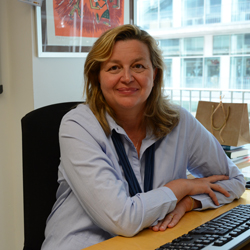Gema Revuelta
4. Kaleidoscope
Communicating research outside of academia: an opportunity

Gema Revuelta, director of the UPF Science, Communication and Society Studies Centre
A crucial part of our job as researchers is publishing the results of our studies. But is it enough to do it in specialized journals? The answer is a resounding NO. Whilst publishing in an academic journal is the first threshold we have to cross, going beyond that is an opportunity we cannot pass up. Lest anyone still question that statement, let’s review the following reasons: 1) research on reality and its challenges should be multidisciplinary; 2) industry and academia should converge; 3) the government and policymakers should pay more attention to scientific evidence; and 4) society and the academic community are mutually dependent and, thus, need to know each other better.
Taking a multidisciplinary approach is the only way to address complex issues such as the Sustainable Development Goals or any social, economic or cultural challenge. We thus need to make sure that our projects and findings reach researchers in other fields, even if they use different jargon or other methods. The disconnect between academia and the productive sector is likewise unsustainable. First, industry does not take into account the knowledge generated by academia, whilst academia does not usually consider the needs of business. Second, the more visible a study is, the more opportunities it has to be considered by industry. Third, the knowledge generated in academia could improve decision-making by government officials, but for that to happen, it must first be visible. Finally, communication is an opportunity to contribute to the advancement of the scientific culture of society at large and even to improve the quality of our studies. This is because the narrower the gap between us, the more likely our research objectives and approach to them are to be in line with people’s needs, values and expectations.
Taking a multidisciplinary approach is the only way to address complex issues such as the Sustainable Development Goals or any social, economic or cultural challenge
So, we can conclude that good research should always be accompanied by good communication. But who should do the communicating? In a study by UPF’s Science, Communication and Society Studies Centre, the general consensus amongst the 1,000 researchers surveyed was that communication should be a shared responsibility between institutional communicators (87%), journalists (74%), and research staff (69%) (Llorente et al., 2019). However, the same survey showed that researchers have not received training to speak to the media or in public.
In this regard, UPF has been a pioneer in scientific communication training (Revuelta et al., 2020). In 1995, we launched the first master’s degree programme on scientific communication in Spain and one of the first in Europe. In 1998, the curriculum for the bachelor’s degree programme in Human Biology included a communication subject in a likewise unprecedented move. Today, communication is taught in many of the master’s and doctoral programmes. However, we must try to ensure that all research staff – in addition to the students – acquire communication skills and actively participate to make their work known to society at large and to strategic groups in the government, industry and other sectors.
LLORENTE, C.; REVUELTA, G.; CARRIÓ, M.; PORTA, M. ‘Scientists’ Opinions and Attitudes towards Citizens’ Understanding of Science and Their Role in Public Engagement Activities’, PLOS ONE, 14 (11), 2019: e0224262. doi: 10.1371/JOURNAL.PONE.0224262.
REVUELTA, G.; DE SEMIR, V.; LLORENTE, C. ‘Spain: Evolution and Professionalisation of Science Communication’. A: T. Gascoigne and B. Shiele (eds.). Communicating Science: A Global Perspective. Australian National University Press, 2020. doi: 10.22459/CS.2020.34.
